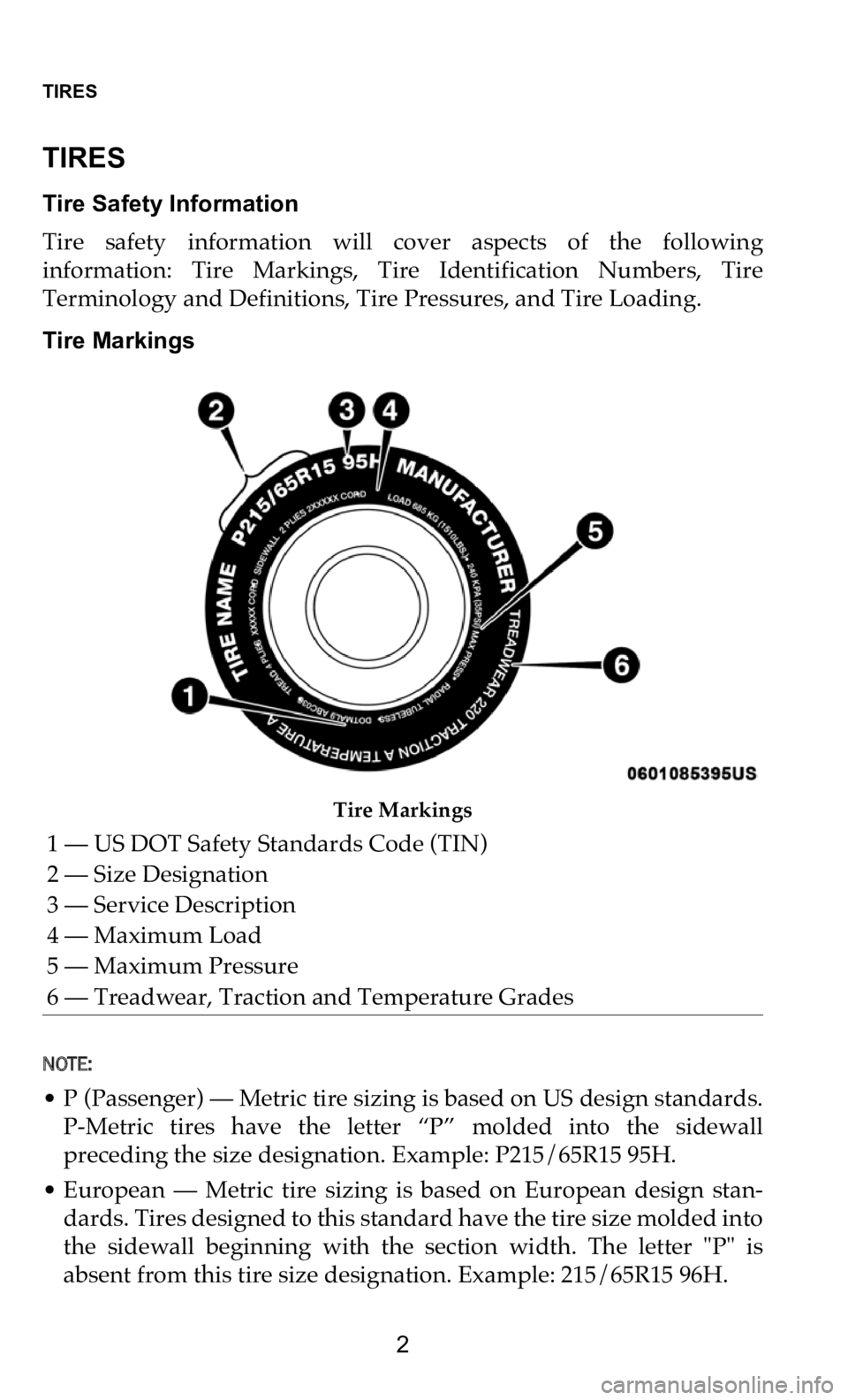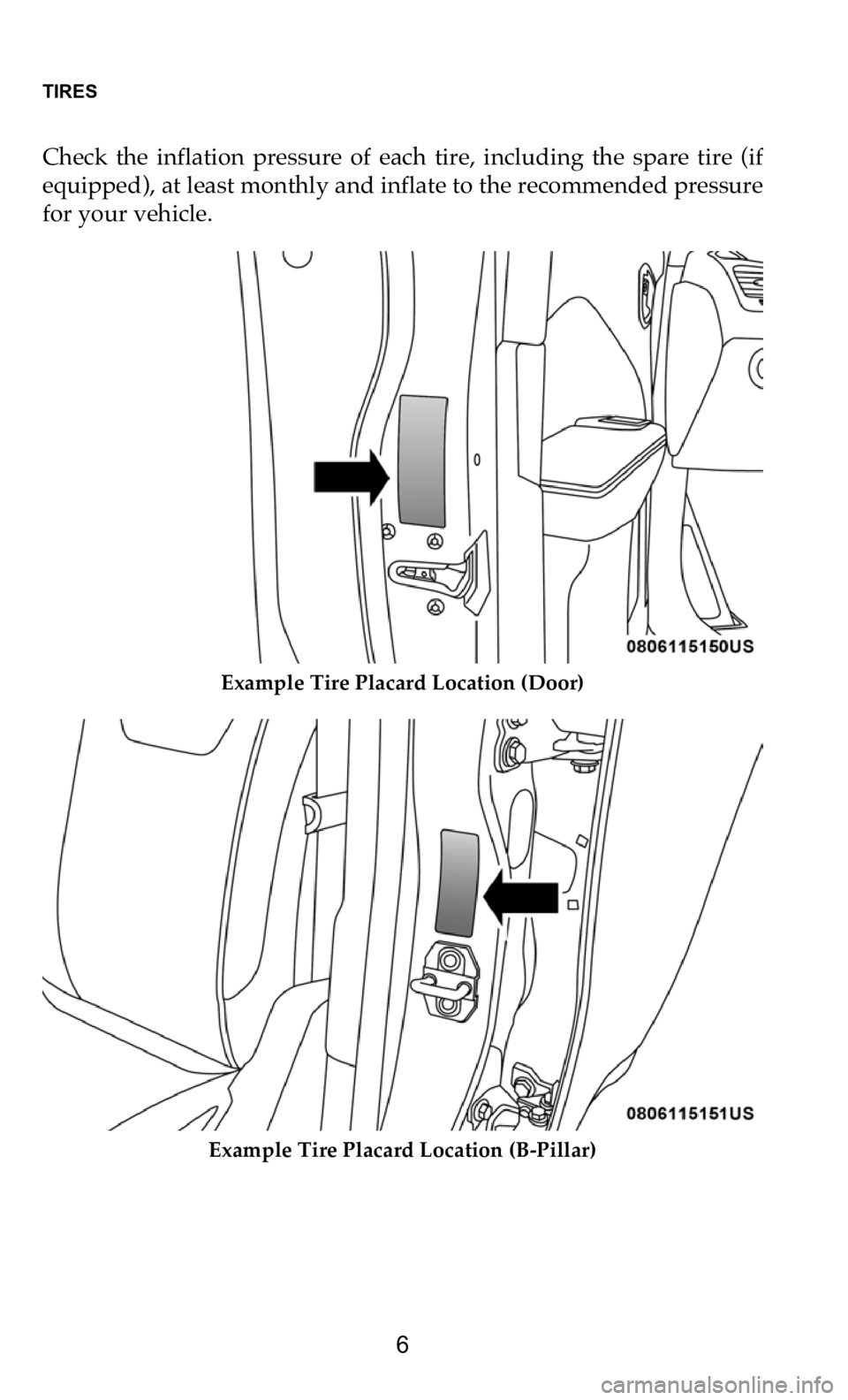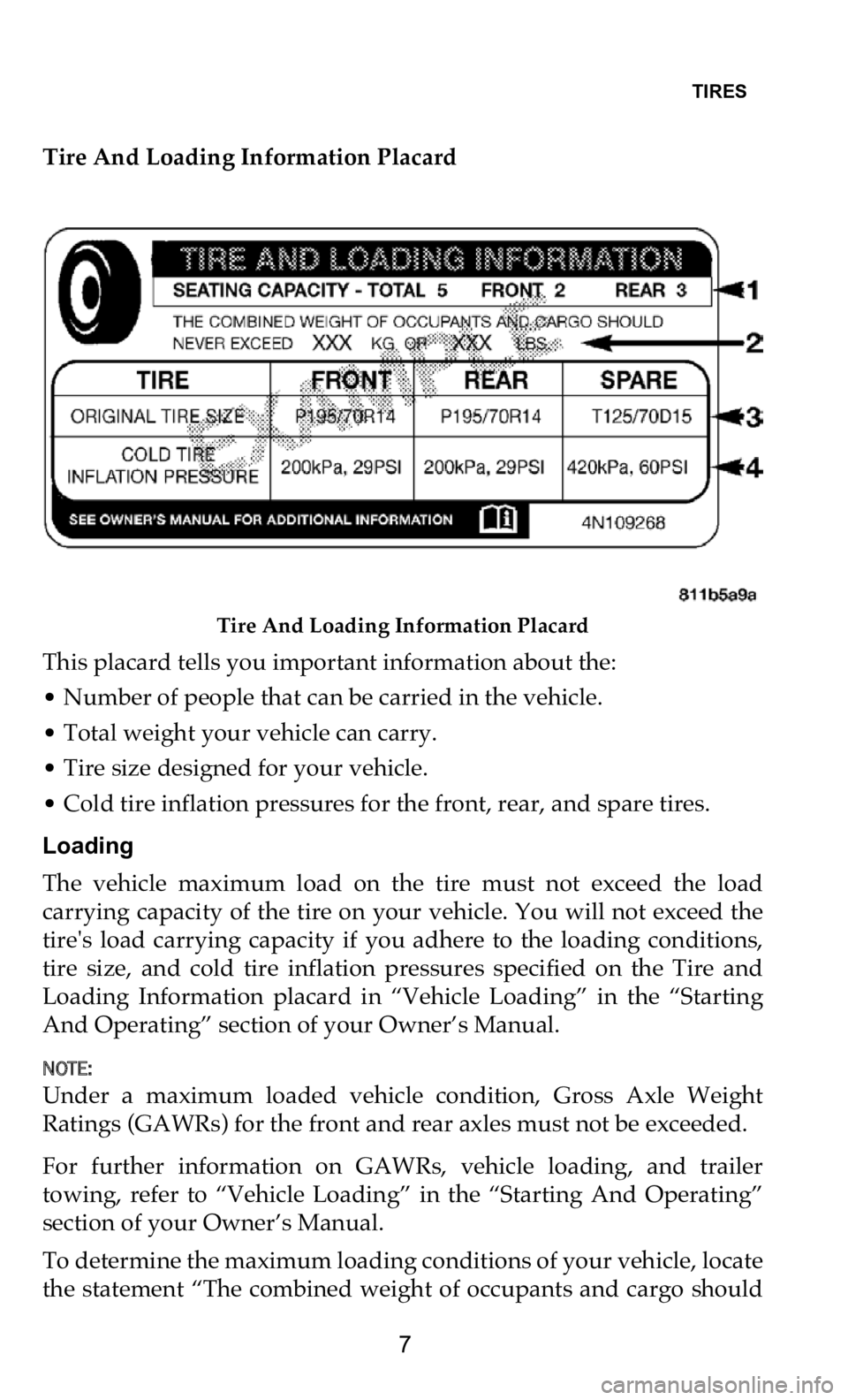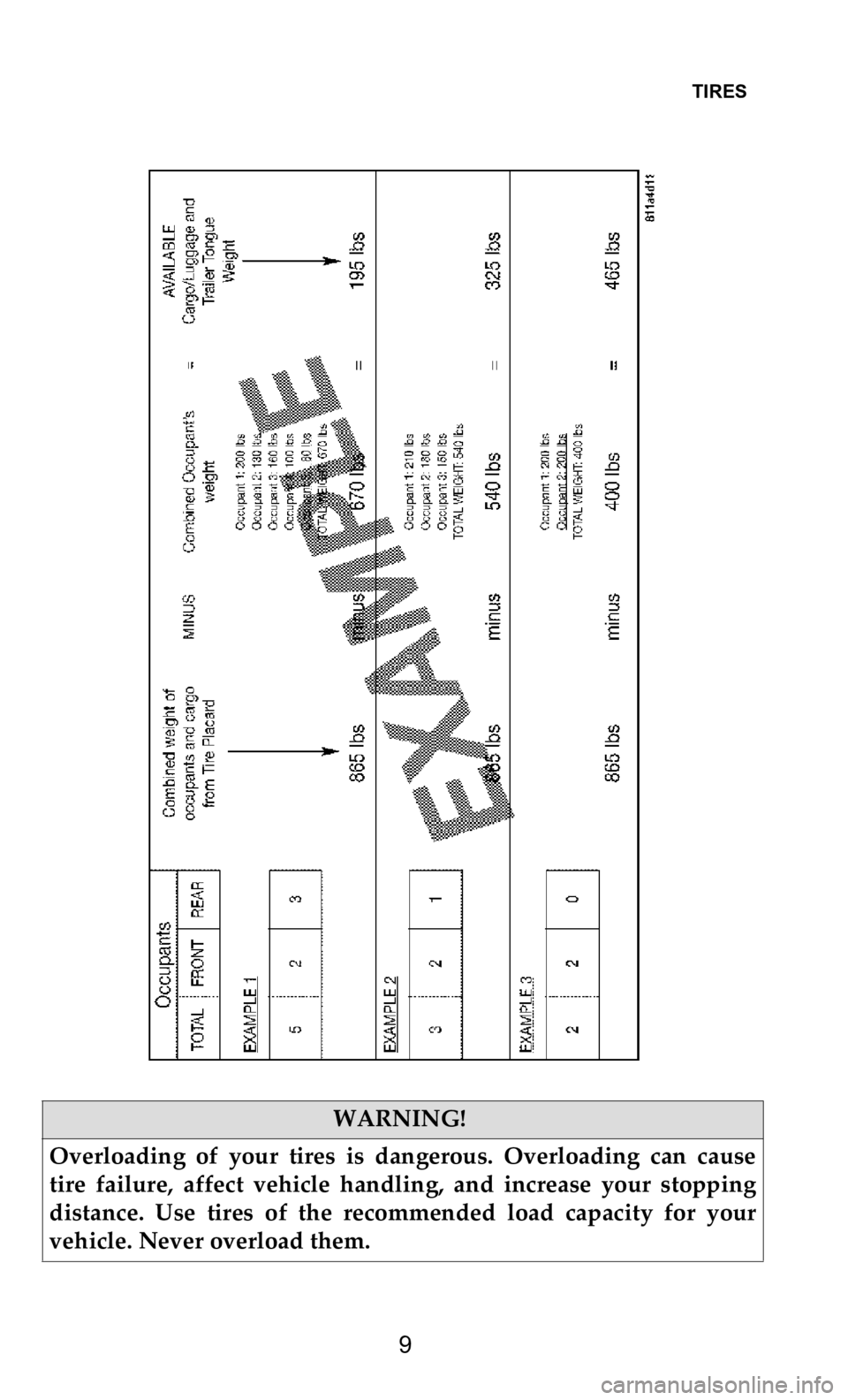DODGE DURANGO 2021 Vehicle Warranty
Manufacturer: DODGE, Model Year: 2021, Model line: DURANGO, Model: DODGE DURANGO 2021Pages: 262, PDF Size: 10.42 MB
Page 1 of 262

Page 2 of 262

TABLE OF CONTENTS
TIRES ........................................................................\
..... 2
DEPARTMENT OF TRANSPORTATIO
N UNIFORM
TIRE QUALITY GRA DES
.............................................. 21
TIRE WA RRANTY ........................................................ 22
BFGO
ODRICH® TIRES ............................................... 25
BRIDG
ESTONE® - FIRESTONE® ............................... 44
CONTINENTAL TIRE
...................................................
86
FALKEN TIRE CORPORATION . ..................................
94
GENERAL TIRE . .........................................................
113
GOO DYEAR® DUNLOP® TIRES .............................. 120
HANKO
OK TIRES ...................................................... 135
KUMHO
TIRES ........................................................... 141
MI CHELIN® ................................................................ 155
NEXEN TIRE
..............................................................
183
PIRELLI TIRES . ..........................................................
193
TOY O TIRES® – LIMITED WARRANTY .................... 212
YOKOHAMA TIRES
— LIM
ITED WARRANTY .......... 255
Page 3 of 262

TIRES
2
TIRES
Tire Safety Information
Tire safety information will cover aspects of the following
in
formation: Tire Markings, Tire Identification Numbers, Tire
Terminology and Definitions, Tire Pressures, and Tire Loading.
Tire Markings
Tire Markings
NOTE:
• P (Passenger) — Metric tire sizing is based on US design standards.
P-Metric tires have the letter “P” molded into the sidewall
preceding the size designation. Example: P215/65R15 95H.
• European — Metric tire sizing is based on European design stan -
d
ards. Tires designed to this standard have the tire size molded into
th
e sidewall beginning with the section width. The letter "P" is
absent from this tire size designation. Example: 215/65R15 96H.
1 — US DOT Safety Standards Code (TIN)
2 — Size Designation
3 — Service Description
4 — Maximum Load
5 — Maximum Pressure
6 — Treadwear, Traction and Temperature Grades
Page 4 of 262

TIRES
3
• LT (Light Truck) — Metric tire sizing is based on US design stan -
dards. The size designation for LT-Metric tires is the same as for
P-
Metric tires except for the letters “LT” that are molded into the
sidewall preceding the size designation. Example: LT235/85R16.
• Temporary spare tires are designed for temporary emergency use
o
nly. Temporary high pressure compact spare tires have the letter
“T” or “S” molded into the sidewall preceding the size designation.
Example: T145/80D18 103M.
• High flotation tire sizing is based on US design standards and it
b
egins with the tire diameter molded into the sidewall. Example:
31x10.5 R15 LT.
Tire Sizing Chart
EXAMPLE:
Example Size Designation: P215/65R15XL 95H, 215/65R15 96H, LT235/85R16C,
T1
45/80D18 103M, 31x10.5 R15 LT
P = Passenger car tire size based on U.S. design standards, or
"....blank...." =
Passenger car tire based on European design standards, or
LT = Light Truck tire based on US design standards, or
T
or S = Temporary spare tire or
3
1 = Overall diameter in inches (in)
2
15, 235, 145 =
Section width in millimeters (mm)
65, 85, 80 = Aspect ratio in percent (%)
•
Ratio of section height to section width of tire, or
1
0.5 = Section width in inches (in)
R
= Construction code
• "R" means radial construction, or
•
"D" means diagonal or bias construction
1
5, 16, 18 = Rim diameter in inches (in)
S
ervice Description:
95 = Load Index
•
A numerical code associated with the maximum load a tire can carry
H
= Speed Symbol
• A symbol indicating the range of speeds at which a tire can carry a load corre -
s
ponding to its load index under certain operating conditions
• The maximum speed corresponding to the speed symbol should only be achieved
u
nder specified operating conditions (i.e., tire pressure, vehicle loading, road condi -
tions, and posted speed limits)
Page 5 of 262

TIRES
4
Tire Identification Number (TIN)
The TIN may be found on one or both sides of the tire; however, the
da
te code may only be on one side. Tires with white sidewalls will
have the full TIN, including the date code, located on the white
sidewall side of the tire. Look for the TIN on the outboard side of black
sidewall tires as mounted on the vehicle. If the TIN is not found on the
outboard side, then you will find it on the inboard side of the tire.
Load Identification:
Absence of the following load identification symbols on the sidewall of the tire
in dicates a Standard Load (SL) tire:
• XL
= Extra load (or reinforced) tire, or
•LL
= Light load tire or
•C, D, E, F, G
= Load range associated with the maximum load a tire can carry at a
specified pressure
Maximum Load –
Maximum load indicates the maximum load this tire is designed to
carry
Maximum Pressure –
Maximum pressure indicates the maximum permissible cold
tire inflation pressure for this tire
EXAMPLE:
DOT MA L9 ABCD 0301
DOT = Department of Transportation
•
This symbol certifies that the tire is in compliance with the US Department of Trans -
p
ortation tire safety standards and is approved for highway use
MA = Code representing the tire manufacturing location (two digits)
L
9 = Code representing the tire size (two digits)
A
BCD = Code used by the tire manufacturer (one to four digits)
0
3 = Number representing the week in which the tire was manufactured (two digits)
•
03
means the 3rd week
01 = Number representing the year in which the tire was manufactured (two digits)
•
01
means the year 2001
• Prior to July 2000, tire manufacturers were only required to have one number to
r
epresent the year in which the tire was manufactured. Example: 031 could repre -
sent the 3rd week of 1981 or 1991
EXAMPLE:
Page 6 of 262

TIRES
5
Tire Terminology And Definitions
Tire Loading And Tire Pressure
NOTE:
The proper cold tire inflation pressure is listed on the driver side
B-
pillar or the rear edge of the driver side door.
Term Definition
B-pillar The vehicle B-pillar is the structural member of the
bo
dy located behind the front door.
Cold Tire Inflation Pressure Cold tire inflation pressure is defined as the tire
pr
essure after the vehicle has not been driven for
at least three hours, or driven less than 1 mile
(1
.6 km) after sitting for a minimum of three hours.
In
flation pressure is measured in units of PSI
(pounds per square inch) or kPa (kilopascals).
Maximum Inflation Pressure The maximum inflation pressure is the maximum
pe
rmissible cold tire inflation pressure for this tire.
The maximum inflation pressure is molded into the
sidewall.
Recommended Cold Tire In
flation Pressure Vehicle manufacturer's recommended cold tire
in flation pressure as shown on the tire placard.
Tire Placard A label permanently attached to the vehicle
de
scribing the vehicle’s loading capacity, the
original equipment tire sizes and the
recommended cold tire inflation pressures.
Page 7 of 262

TIRES
6
Check the inflation pressure of each tire, including the spare tire (if
equipped), at least monthly and inflate to the recommended pressure
for your vehicle.
Example Tire Placard Location (Door)
Example Tire Placard Location (B-Pillar)
Page 8 of 262

TIRES
7
Tire And Loading Information Placard
Tire And Loading Information Placard
This placard tells you important information about the:
• Number of people that can be carried in the vehicle.
•
Total weight your vehicle can carry.
•
Tire size designed for your vehicle.
•
Cold tire inflation pressures for the front, rear, and spare tires.
L
oading
The vehicle maximum load on the tire must not exceed the load
ca
rrying capacity of the tire on your vehicle. You will not exceed the
tire's load carrying capacity if you adhere to the loading conditions,
tire size, and cold tire inflation pressures specified on the Tire and
Loading Information placard in “Vehicle Loading” in the “Starting
And Operating” section of your Owner’s Manual.
NOTE:
Under a maximum loaded vehicle condition, Gross Axle Weight
Ra
tings (GAWRs) for the front and rear axles must not be exceeded.
For further information on GAWRs, vehicle loading, and trailer
to
wing, refer to “Vehicle Loading” in the “Starting And Operating”
section of your Owner’s Manual.
To determine the maximum loading conditions of your vehicle, locate
th
e statement “The combined weight of occupants and cargo should
Page 9 of 262

TIRES
8
never exceed XXX kg or XXX lbs” on the Tire and Loading Information
placard. The combined weight of occupants, cargo/luggage and
trailer tongue weight (if applicable) should never exceed the weight
referenced here.
Steps For Determining Correct Load Limit:
(1) Locate the statement “The combined weight of occupants and
ca
rgo should never exceed XXX kg or XXX lbs.” on your vehicle's
placard.
(2) Determine the combined weight of the driver and passengers that
wi
ll be riding in your vehicle.
(3) Subtract the combined weight of the driver and passengers from
XX
X kg or XXX lbs.
(4) The resulting figure equals the available amount of cargo and luggage
lo
ad capacity. For example, if “XXX” amount equals 1,400 lbs. and there
will be five 150 lb passengers in your vehicle, the amount of available
cargo and luggage load capacity is 650 lbs. (1,400-750 (5x150) = 650 lbs.)
(5) Determine the combined weight of luggage and cargo being loaded
on
the vehicle. That weight may not safely exceed the available cargo
and luggage load capacity calculated in Step 4.
(6) If your vehicle will be towing a trailer, load from your trailer will be
tr
ansferred to your vehicle. Consult this manual to determine how this
reduces the available cargo and luggage load capacity of your vehicle.
Metric Example For Load Limit
For example, if “XXX” amount equals 635 kg and there will be five 68 kg
pa
ssengers in your vehicle, the amount of available cargo and luggage
load capacity is 295 kg (635-340 (5x68) = 295 kg) as shown in step 4.
NOTE:
• If your vehicle will be towing a trailer, load from your trailer will be
transferred to your vehicle. The following table shows examples on
how to calculate total load, cargo/luggage, and towing capacities of
your vehicle with varying seating configurations and number and
size of occupants. This table is for illustration purposes only and
may not be accurate for the seating and load carrying capacity of
your vehicle.
• For the following example, the combined weight of occupants and
c
argo should never exceed 865 lbs (392 kg).
Page 10 of 262

TIRES
9
WARNING!
Overloading of your tires is dangerous. Overloading can cause
ti
re failure, affect vehicle handling, and increase your stopping
distance. Use tires of the recommended load capacity for your
vehicle. Never overload them.